This post may contain affiliate links. Please read my privacy policy.
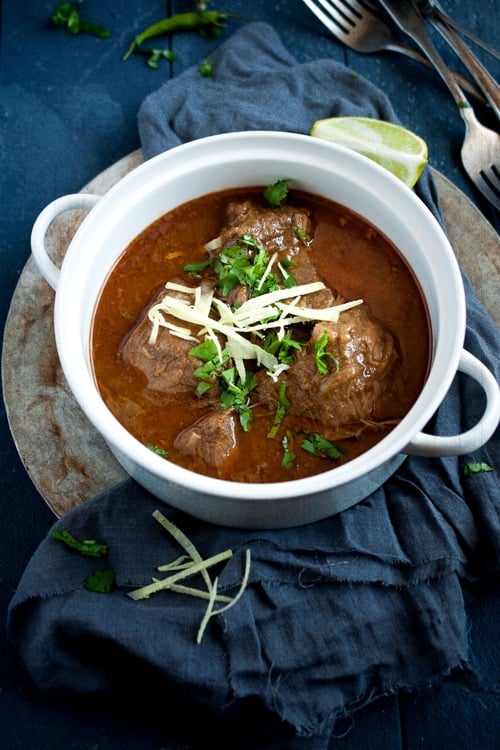
Table of Contents
FREE EMAIL BONUS:
4 Secrets to Authentic Indian Cooking
Tips, tricks, and recipes for perfect Indian dishes
FREE EMAIL BONUS:
4 Secrets to Authentic Indian Cooking
Tips, tricks, and recipes for perfect Indian dishes
I used to think Indian recipes were too difficult to make at home. You know, with all the intricate spices and long cooking times. But it is actually quite simple as long as you have a few key ingredients and some time to spare.
In fact, this Indian-style beef stew made me fall in love with slow-cooking tough cuts of beef. You’ll get what I mean when you take that first bite! The three- to four-hour simmer yields tender chunks loaded with the rich, warm spices of the nihari stew.
Impress everyone at your next Indian food night by making this recipe together with Chicken Biryani and Chicken Tikka Masala!
What Is Nihari
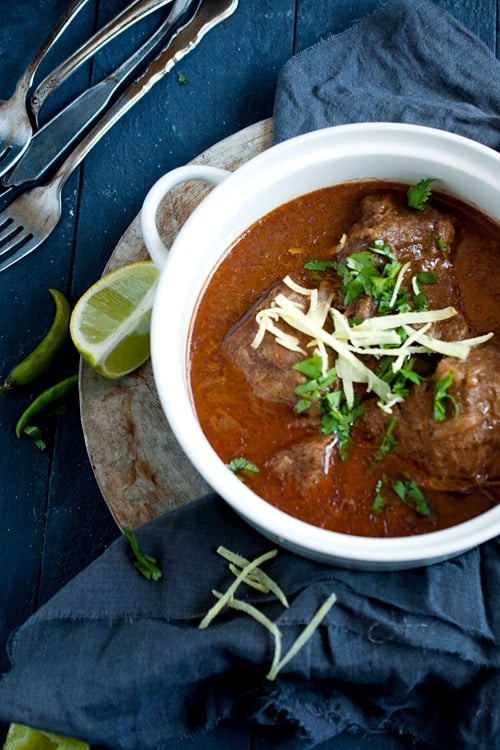
Nihari, sometimes called nihari gosht, is an Indian stew popular in the northern region of India, Pakistan, and Bangladesh. The term “nihari” comes from the Arabic word nahaar meaning “morning.”
Traditionally, this hearty, spicy stew is cooked slowly overnight and eaten as breakfast, especially during the colder months. It even became a staple of Mughal royal cuisine when nawabs (noblemen) started having it for breakfast after their morning prayer.
What makes this beef shank stew so special is the nihari masala, a unique mix of spices that gives this stew its rich, robust flavor. You may also hear it referred to as nihari gosht, but that’s just a general term for red meat (beef, mutton, or lamb) commonly used for the dish.
Ingredients
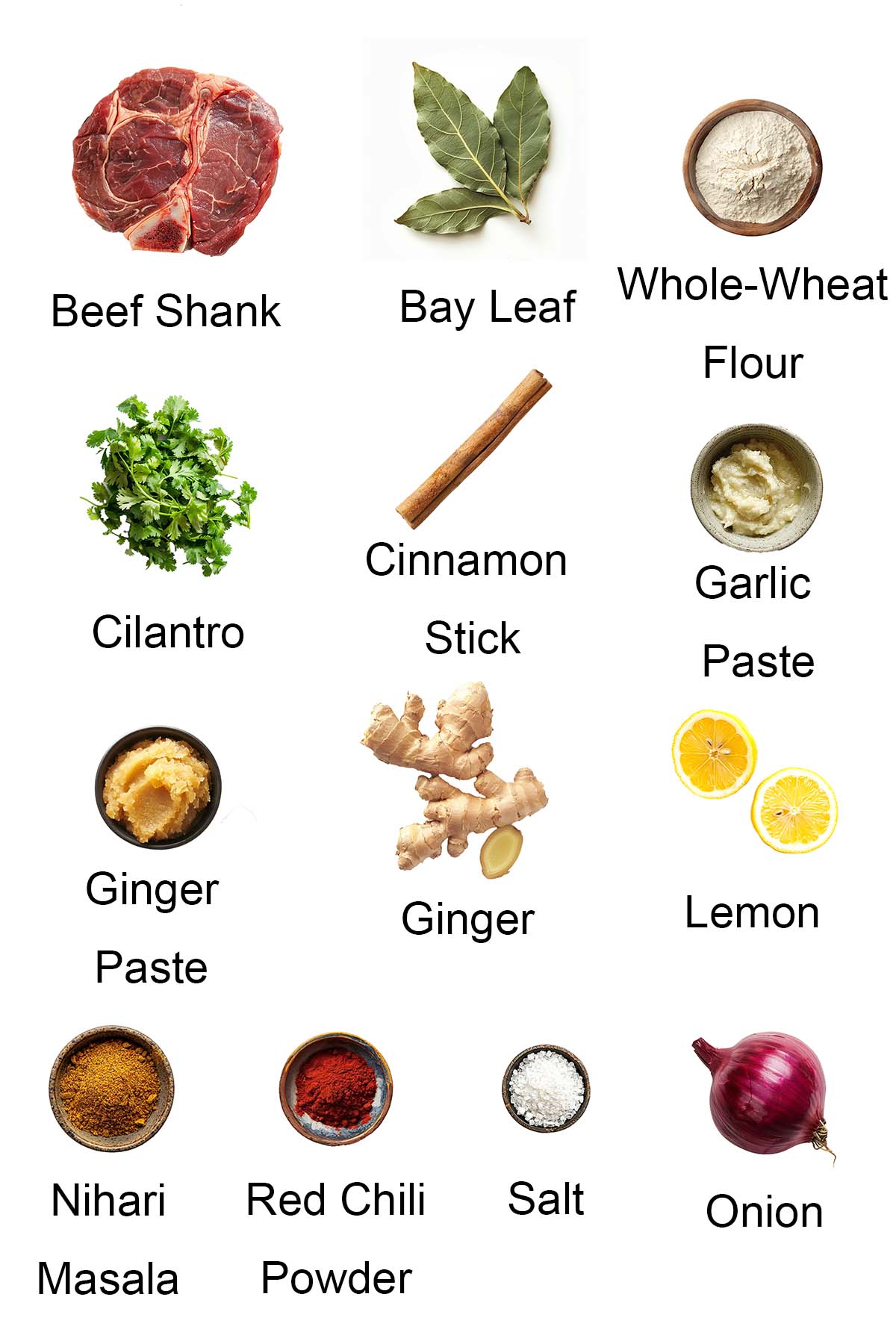
Ingredients For Indian Beef Stew (Nihari)
- Beef shanks – I prefer using bone-in beef shanks for Indian-style beef stew, but you can also use boneless beef too. Choose well-marbled cuts for the best flavor and texture.
- Nihari masala – a homemade nihari masala typically includes warming spices like fennel, cumin, cardamom, cloves, nutmeg, and cinnamon. If you don’t have some of those, look for pre-made nihari masala mix in your local Indian/Asian store or order it from Amazon. It won’t be as potent as making your own, but it will work just fine.
- Onion, garlic, and ginger – the holy trinity of Indian cuisine. They provide the flavor base for our beef nihari recipe.
- Cilantro and lemon – optional but highly recommended for a truly authentic experience! The lemon juice cuts through the richness of the stew, while the cilantro adds a fresh, herby flavor that lightens up the dish.
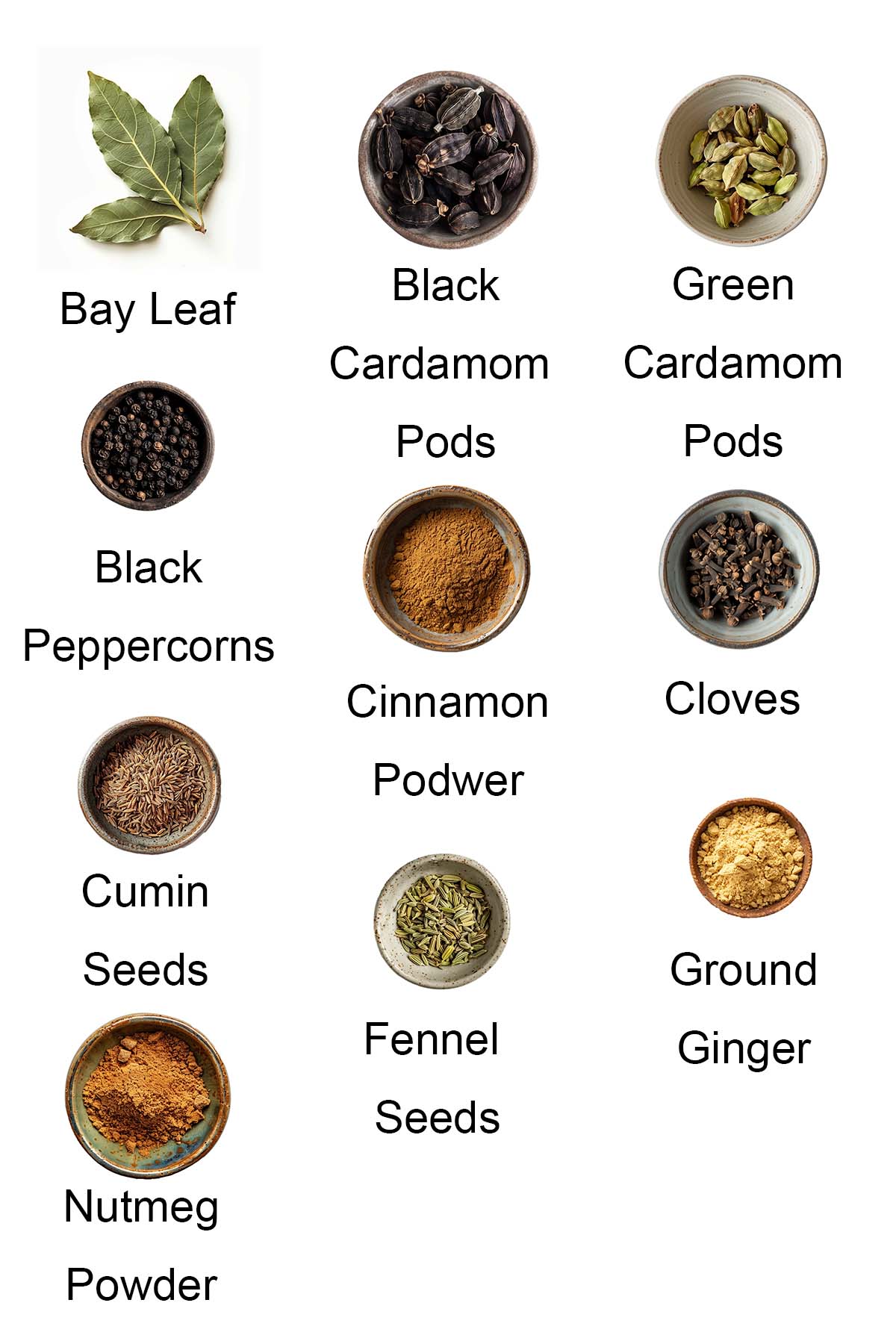
Ingredients For Nihari Masala
See the recipe card for full information on ingredients.
How To Make Indian Beef Stew
Nothing tastes better than a homemade bowl of beef nihari loaded with tender meat, aromatic spices, and a rich, flavorful gravy. It’s not too difficult to make at home either, but it does require a long cooking time!
The beef shanks, which are usually tough and chewy, become so tender and flavorful after being cooked for several hours in the gravy. And the longer it simmers, the more the flavors develop and intensify, making it worth the wait!
Here’s how to make nihari at home:
Step 1: Add all the ingredients in a spice grinder and grind to fine powder form. Sift the powder through a fine sieve to remove any rough pieces and store in an airtight container in the refrigerator. You can keep this for about a month.
Step 2: In a large pot, add the beef shanks along with 1 ½ teaspoon of ginger paste, 1 ½ teaspoon of garlic paste, bay leaf, 1 cinnamon stick, 1 teaspoon of salt, and 5 cups of water. Boil the shanks on low-medium heat till the meat is tender and well done, about 2-3 hours.
Pro tip: Make sure to add a little more water if the water starts to dry out too fast; there should be enough water in the pot to cover the meat.
Step 3: Once the meat is done, use a slotted spoon to carefully remove the meat from the liquid and keep aside. Measure the stock (liquid) and add water if needed to make it 4 cups. Reserve. Discard the bay leaf and cinnamon. Let the meat and stock stay together while you store them in the refrigerator, remove the meat from the stock just before you start to put the stew together.
Pro tip: You can do this step up to 2 days in advance.
Step 4. In a non-stick saucepan or a pot, heat oil over medium heat. When the oil gets hot, add the sliced onions and stir-fry constantly until they turn golden-brown in color. Don’t over fry or the onions will burn.
Step 5. Add the remaining 1½ teaspoon of ginger paste and 2 teaspoons of garlic paste and do a quick stir. Add 1 cup of the reserved stock to the pan, cover the pan and let everything cook on low heat for 5-6 minutes until the liquid starts to dry out, and the onions turn very soft.
Step 6. Add the beef shanks to the pan along with the chili powder and Nihari Masala. Sauté gently for 2-3 minutes, and try to avoid the meat from breaking down.
Step 7. Add 3 cups of remaining stock. Give everything a gentle stir and cover the pan. Let it simmer on low heat for 10 minutes.
Pro tip: If the stock is less than 3 cups, add water.
Step 8. In the meantime, in a small bowl, combine the flour with ½ cup of water. Stir well.
Step 9. After the stew has simmered for 10 minutes, add the flour mixture to the pan, stirring gently. Cover the pan and let it simmer for another 10-15 minutes on low heat. Check it once or twice to make sure the gravy is not drying out.
Step 10. Remove the pan from the heat and let it stand for 10 minutes with its lid on before serving. When ready to serve, add salt to taste and garnish the stew with ginger, cilantro, and lemon juice. Serve hot with pita, naan, or any bread of your choice.
Helpful Tips For Home Cooks
- Toast your fennel seeds, cardamom pods, and other whole spices in a dry pan before grinding them up. This step draws out their essential oils, intensifying the flavors of your Indian beef soup.
- While an Indian stew recipe is traditionally made with beef, goat and lamb are delicious alternatives. Other beef cuts like chuck, short ribs, oxtail, or brisket will work too.
- Dissolve the wheat flour in hot water before stirring it into the stew. This prevents clumps and creates a smooth, velvety gravy.
- If you’re short on time, make this nihari in an Instant Pot or pressure cooker. However, make sure to use bone-in beef shanks to add more flavor and collagen to the broth. You can also add more spices to account for the shorter cooking time.
- Cook the beef stew on low-medium heat for a long time to achieve that signature velvety texture. The gelatinous marrow in the beef shanks will break down over time, making the stew extra rich and flavorful.
Frequently Asked Questions
Is curry the same as beef stew?
No, curry and beef stew are different. Curry gets its unique flavor from a classic blend of spices like turmeric, cumin, and garam masala, while beef stew is a catch-all term for meat slowly cooked in liquid until tender, often with veggies, like this Asian Beef Stew.
How to cook beef stew meat so it is tender?
Gently simmer your beef stew meat for at least two hours. This step breaks down the collagen and connective tissues, especially in tougher beef cuts, resulting in the most tender meat.
What is the difference between nihari and haleem?
Nihari is more of a traditional Indian stew with chunks of meat and a thick gravy, while haleem has a porridge-like texture. Making haleem involves slow-cooking grains like barley and wheat for hours with lentils, meat, and spices, then pounded together into a thick paste.
How many calories per serving?
This Indian stew recipe has only 254 calories per serving.
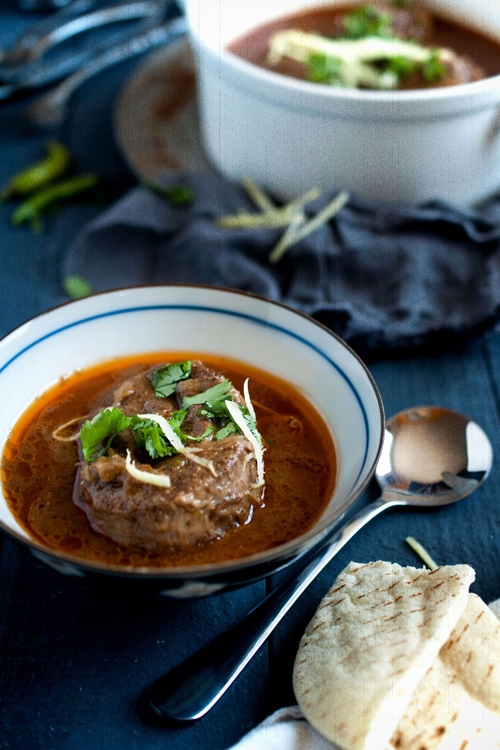
What To Serve With Beef Nihari
Nihari is usually served with traditional accompaniments like naan or roti (Indian flatbreads) or a bowl of steamed rice and lemon wedges.
For an easy and wholesome weeknight dinner, I recommend the following recipes:
I hope you enjoy this post as much as I do. If you try my recipe, please share your photo in the Comments section and consider giving it a 5-star rating. I can’t wait to see your creations! Want more easy and delicious recipes? Subscribe to my newsletter and follow me on Facebook, Pinterest, and Instagram for new updates.
Indian Beef Stew (Nihari)
Ingredients
- 2 lbs (1kg) Beef shank or 1 ½ lb. (0.6 kg) boneless beef
- 1 bay leaf
- 2 one-inch cinnamon sticks
- 1 ½ teaspoons ginger paste, + 1 ½ teaspoons
- 1 ½ teaspoons garlic paste, + 2 teaspoons
- 1 large onion, thinly sliced
- 1 teaspoon red chili powder
- 2 1/2 teaspoons Nihari Masala
- 1 teaspoon salt
- 2 tablespoons whole-wheat flour
- One 1-inch piece fresh ginger, julienned
- ¼ cup chopped cilantro
- 1 lemon, sliced
Nihari Masala:
- 2 tablespoons fennel seeds
- 2 tablespoons cumin seeds
- 4 green cardamom pods
- 1 black cardamom pods
- 8 cloves
- 15 whole black peppercorns
- 1 teaspoon ground ginger
- ¼ teaspoon nutmeg powder
- ¼ teaspoon cinnamon powder
- 1 bay leaf
Instructions
Preparing Nihari Masala:
- Add all the ingredients in a spice grinder and grind to fine powder form. Sift the powder through a fine sieve to remove any rough pieces and store in an airtight container in the refrigerator. You can keep this for about a month.
Boiling the Shanks:
- In a large pot add the beef shanks along with 1 ½ teaspoon of ginger paste, 1 ½ teaspoon of garlic paste, bay leaf, 1 cinnamon stick, 1 teaspoon of salt and 5 cups of water. Boil the shanks on low-medium heat till the meat is tender and well done, about 2-3 hours. (Make sure to add a little more water if the water starts to dry out too fast; there should be enough water in the pot to cover the meat).
- Once the meat is done, use a slotted spoon to carefully remove the meat from the liquid and keep aside. Measure the stock (liquid) and add water if needed to make it 4 cups, reserve. Discard the bay leaf and cinnamon. You can do this step up to 2 days in advance. Let the meat and stock stay together while you store them in the refrigerator, remove the meat from the stock just before you start to put the stew together.
Stew (Nihari):
- In a non-stick saucepan or a pot, heat oil over medium heat. When the oil gets hot, add the sliced onions and stir-fry constantly until they turn golden-brown in color. Don’t over fry or the onions will burn.
- Add the remaining 1½ teaspoon of ginger paste and 2 teaspoons of garlic paste and do a quick stir. Add 1 cup of the reserved stock to the pan, cover the pan and let everything cook on low heat for 5-6 minutes until the liquid starts to dry out, and the onions turn very soft.
- Add the beef shanks to the pan along with the chili powder and Nihari Masala. Sauté gently for 2-3 minutes, and try to avoid the meat from breaking down.
- Add 3 cups of remaining stock (if the stock is less than 3 cups add water). Give everything a gentle stir and cover the pan. Let it simmer on low heat for 10 minutes.
- In the meantime, in a small bowl, combine the flour with ½ cup of water. Stir well.
- After the stew has simmered for 10 minutes, add the flour mixture to the pan, stirring gently. Cover the pan and let it simmer for another 10-15 minutes on low heat. Check it once or twice to make sure the gravy is not drying out.
- Remove the pan from the heat and let it stand for 10 minutes with its lid on before serving. When ready to serve, add salt to taste and garnish the stew with the ginger, cilantro and lemon juice and serve hot with pita, naan or any bread of your choice.
Notes
- Toast your fennel seeds, cardamom pods, and other whole spices in a dry pan before grinding them up. This step draws out their essential oils, intensifying the flavors of your Indian beef soup.
- While an Indian stew recipe is traditionally made with beef, goat and lamb are delicious alternatives. Other beef cuts like chuck, short ribs, oxtail, or brisket will work too.
- Dissolve the wheat flour in hot water before stirring it into the stew. This prevents clumps and creates a smooth, velvety gravy.
- If you’re short on time, make this nihari in an Instant Pot or pressure cooker. However, make sure to use bone-in beef shanks to add more flavor and collagen to the broth. You can also add more spices to account for the shorter cooking time.
- Cook the beef stew on low-medium heat for a long time to achieve that signature velvety texture. The gelatinous marrow in the beef shanks will break down over time, making the stew extra rich and flavorful.
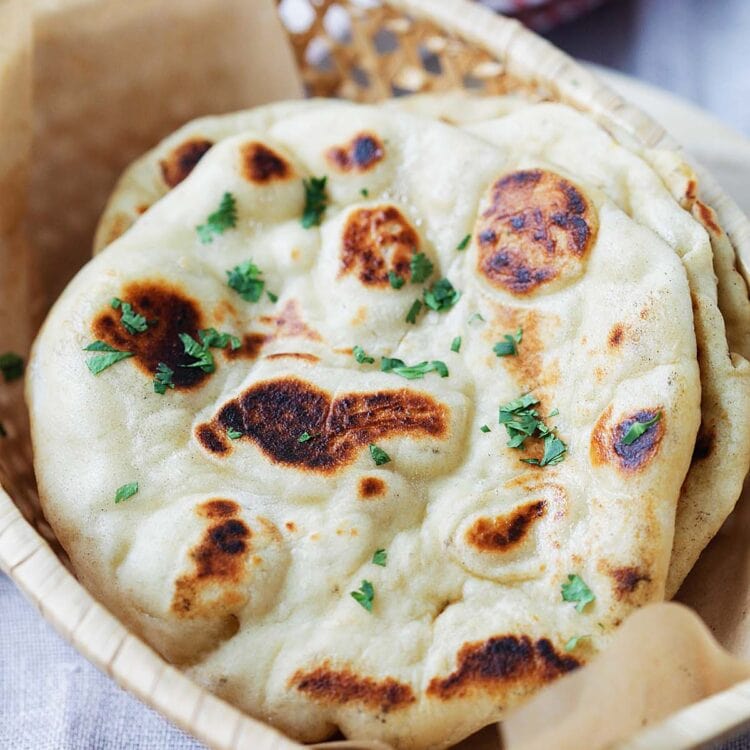
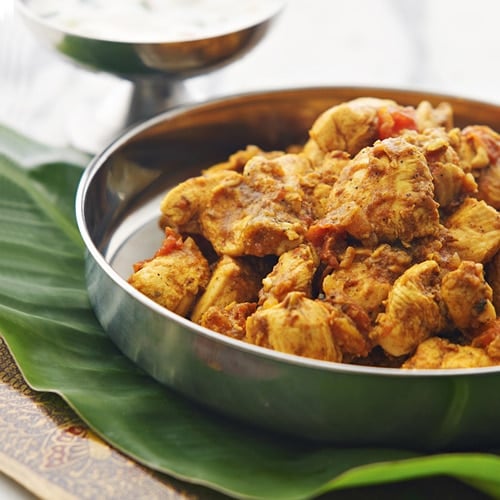
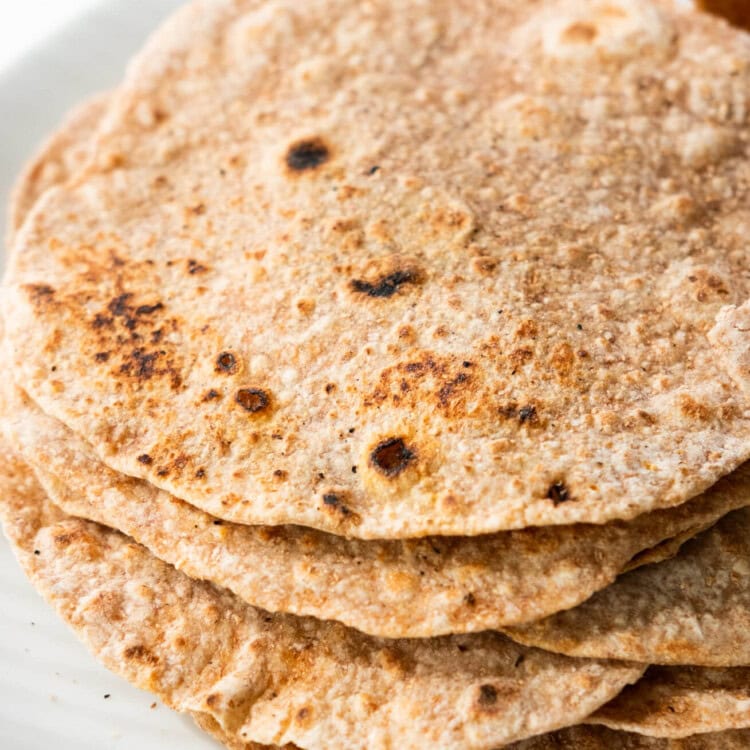

It turned out really good
This recipe is excellent and I’ll make it again many times, just as printed. I’ve tried to make Nihari twice before with different recipes and it didn’t have the taste that I’m used to. Spice was excellent. Also, it’s extremely easy to make.
Thanks.
I clicked on the link and apparently she doesn’t have her site anymore; it was down. That’s too bad!
(The recipe calls for 2 cinnamon sticks, but only asks you to use one when cooking beef. I don’t know what the other is for since the masala mix has 1/4 tsp ground cinnamon.)
Thanks for your trying.
I’m making this for the 3rd time now! It’s very close to what I used to have at an Indian restaurant, this recipe is a keeper! Thanks so much ❤️
Thanks.
Abdul-Aziz,
This is not a “comment”. Actually it is a query.. I just LOVE potatoes, potatoes in everything (almost) that I cook. I have tried at least four different Nihari recipes and now I want to try your recipe, and even before trying it out I am positive it will be yummy with a capital M. BUT, I want to add potatoes to my dish, something I have never tried (or even tasted, for that matter). My question is: is it okay to add potatoes to my Nihari dish? Will it in any way “ruin” the dish? Now that is the last thing I want to happen. Should I go ahead and take the risk?
Lol, I’m actually gonna do this today :D I don’t think it’d ruin the dish but I’d either add lesser flour because of the extra starch of the potatoes(if you’re cooking it together with the meat), or boil the potatoes separately and incorporate them closer to the end of cooking this dish. .
It turned out really good
Awesome thanks!
Can I use rye flour instead of Maida or Atta?
I am not sure.
wow, Nihari is something i can eat daily, and your recipe is so amazing big thumps up i also make nihari and its my mother recipe
I made this yesterday! Was absolutely fantastic! Unfortunately I didn’t have the black cardomom, so it was very slightly lacking in the smokey flavor I’m used to from my favorite restaurant, but I’m going to try again to see if that’s the final touch, but really, it was just about perfect. Not sure I agree with the 25 mins prep time, lol, but maybe with some practice I’ll get there ;) I also swapped out the 2-3 hours stovetop time with a pressure cooker (a Christmas gift) and that worked very well to reduce total cooking time. Very highly recommended. I’ve tried numerous Nihari recipes, and none has come close – this one is just an earthy, warming delight.
Hi Ian, thanks for trying the Indian Beef Stew or Nihari recipe.
nice recipe ………………………..,,,,,,,,,,,,,,,,,,,,,,,,,,,,,,,,//////////////////////////// THANKS